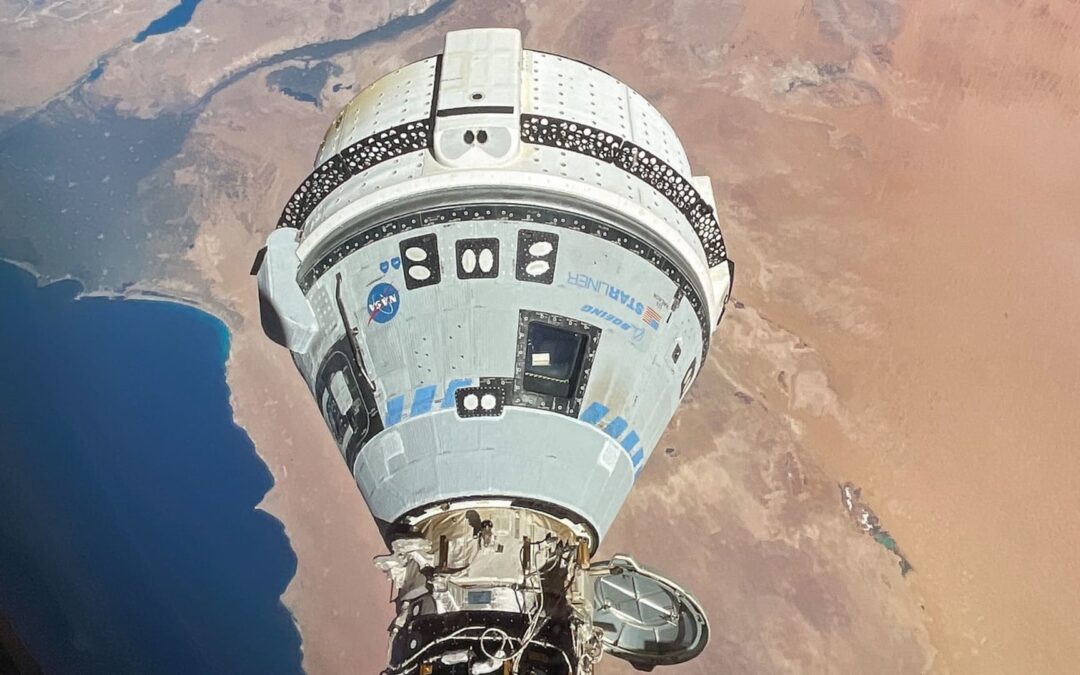Boeing’s Starliner spacecraft is pictured docked to the International Space Station orbiting above Egypt’s Mediterranean coast on June 13, 2024.
NASA
NASA and Boeing are further extending the first Starliner crewed flight but are not yet setting a new target date for returning the capsule to Earth, the organizations announced on Friday.
Boeing’s Starliner capsule “Calypso” will stay at the International Space Station into next month while the company and NASA conduct new testing back on the ground. Boeing’s crew flight test represents the first time Starliner is carrying people, flying NASA astronauts Butch Wilmore and Suni Williams.
Officials say the Starliner team is starting a test campaign of the spacecraft’s thruster technology at White Sands, New Mexico – testing that will be completed before Starliner returns to Earth.
“We think the testing could take a couple of weeks. We’re trying to replicate the inflight conditions as best we can on the ground,” NASA’s Commercial Crew manager Steve Stich said during a press conference.
Before launching on June 5, Boeing and NASA planned for Starliner to be in space for nine days. As of Friday, the Starliner flight has tallied 24 days and counting.
Despite the extended stay at the ISS, officials emphasized that Starliner is safe to return at any point in case of an emergency. NASA and Boeing say the delay for testing is solely to gather more data about the spacecraft’s performance, in particular its thruster system.
“I want to make it very clear that Butch and Suni are not stranded in space,” Stich said.
Sign up here to receive weekly editions of CNBC’s Investing in Space newsletter.
The Starliner crew flight test represents a final major step before NASA certifies Boeing to fly crew on operational, six-month missions. Yet, similar to the previous two spaceflights that were uncrewed, Starliner is running into several problems during the mission.
Starliner was once seen as a competitor to SpaceX’s Dragon, which has made 12 crewed trips to the ISS over the past four years. However, various setbacks and delays have steadily slipped Starliner into a backup position for NASA, with the agency planning to have SpaceX and Boeing fly astronauts on alternating flights.









